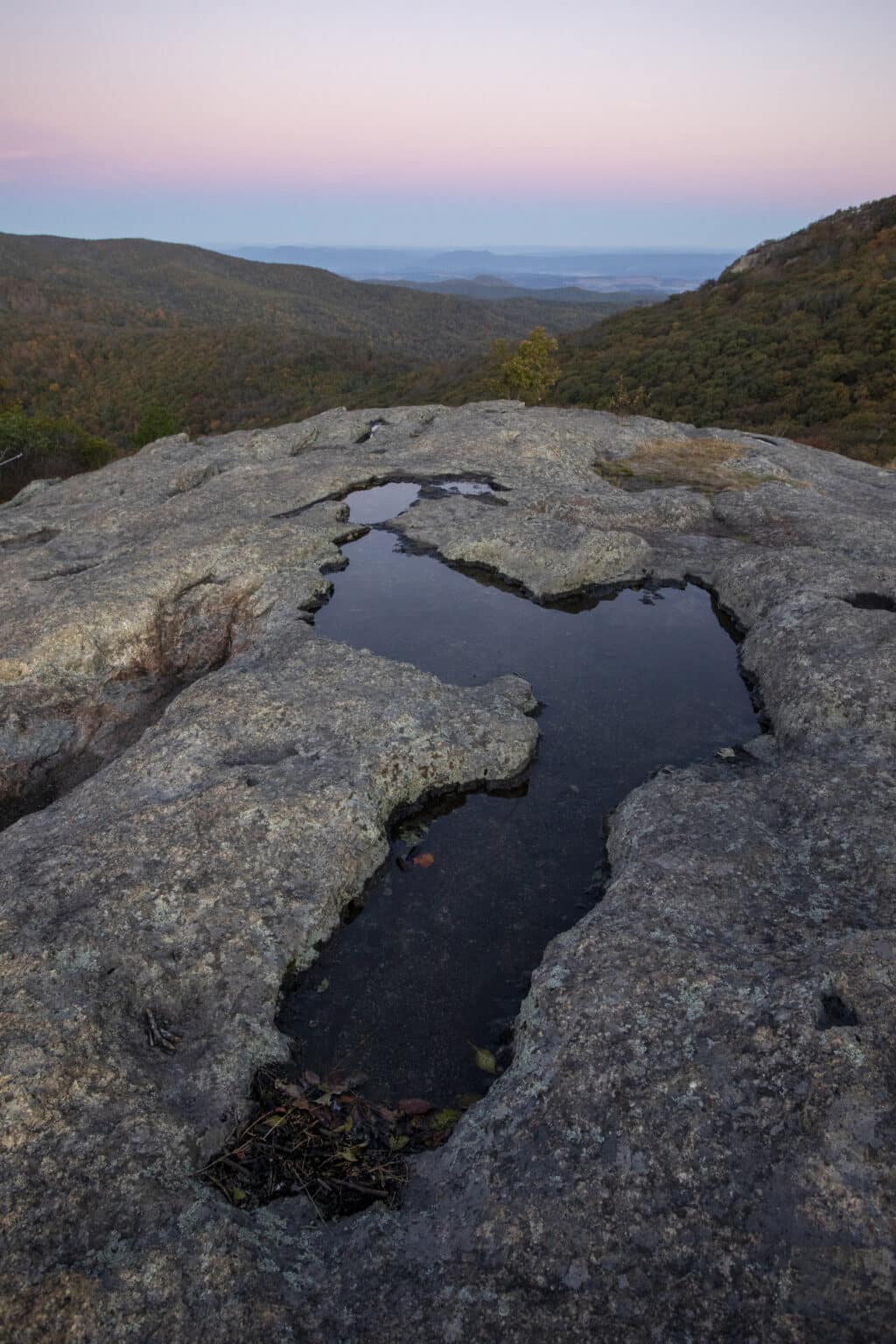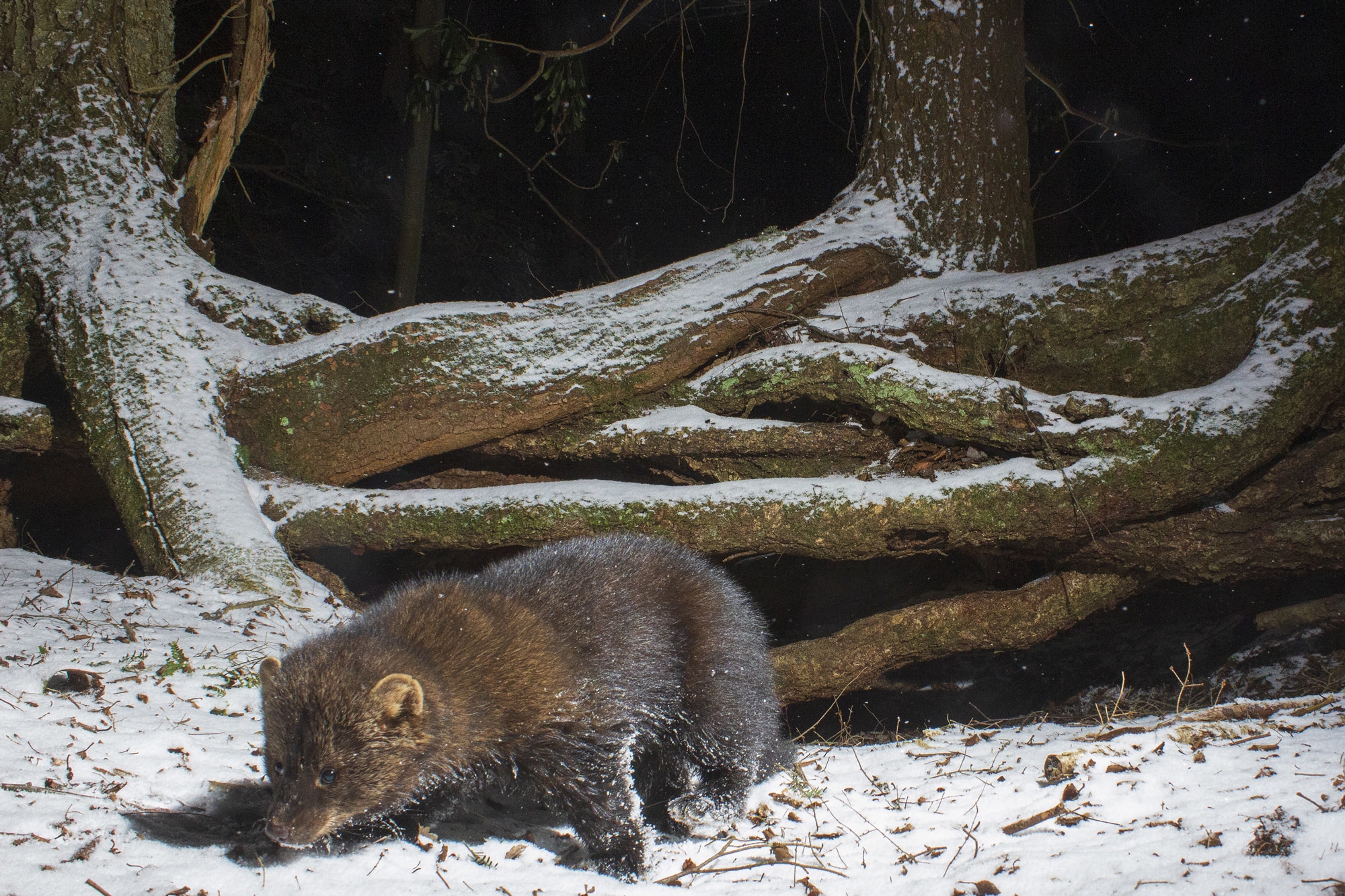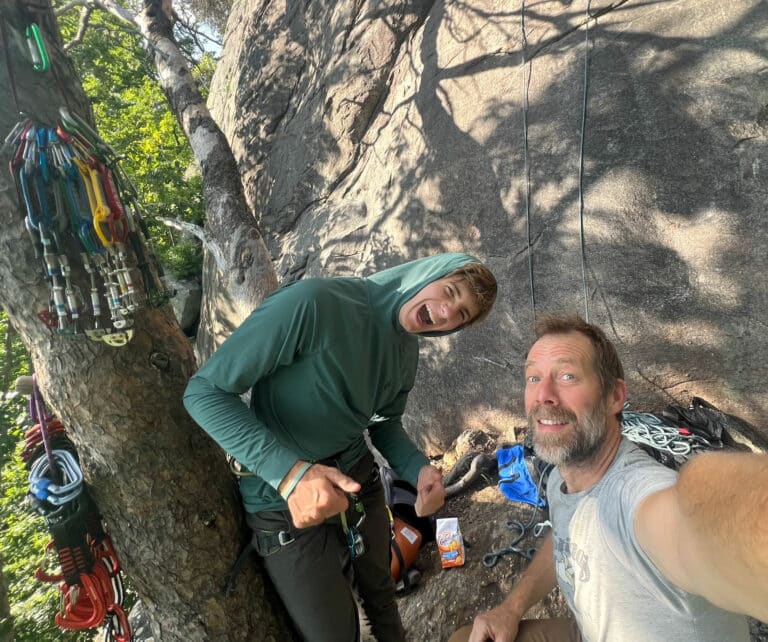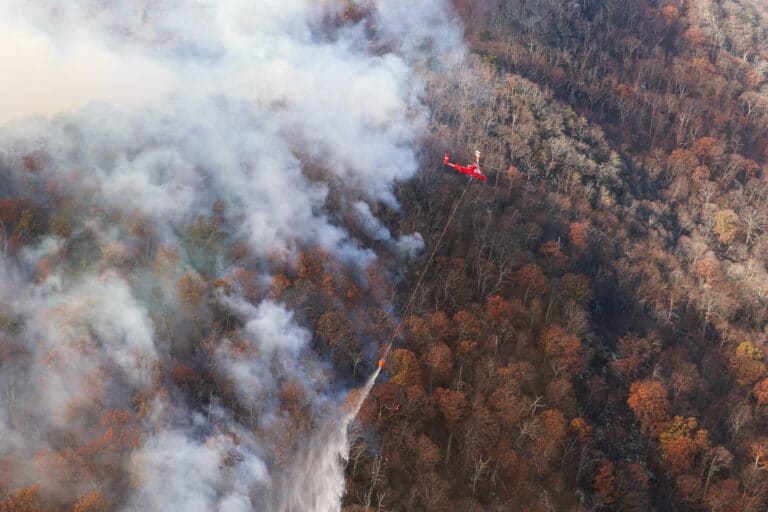The author of a new book, The Central Appalachians: Mountains of the Chesapeake, shares some of his favorite photos taken while documenting the region’s biodiversity.
I never felt so deflated, but oddly excited, in any creative pursuit as when a black bear destroyed my homebuilt DSLR camera trap. Deflated because of the time it takes to build the housings, connect the flashes, program the sensor; never mind the carrying and setting up of gear in mountain habitat. But a bear is gonna bear and there’s no use in hoping it would act any different. I did not even care to photograph a bear as I already had many times. I was after fisher. For three winters I tried to capture an image of one of the Blue Ridge’s most elusive wilderness predators for a book project I was in midst of. A phantom of Appalachian legend and extirpated from much of the readership of this publication, its reintroduction in West Virginia during the late 1960s is a conservation success story. When I finally captured that first fisher image in February of 2020 it made me excited for more. Not just for snowy images of fisher in winter but in the greenery of summer! Yeah, about that……

But it was worth it a thousand times over. From chasing that arboreal phantom weasel to dealing with dangerously curious bears these moments were but some of the many experiences that illustrate my book The Central Appalachians: Mountains of the Chesapeake (Schiffer Publishing, 2024). It is a celebration of the flora, fauna, and environmental significance of this most ancient mountain chain. From wood turtles and rattlesnakes, hellbenders and brook trout, summits, trails, and autumn leaves. From sparring deer, bobcats, endangered orchids and imperiled ecosystems, and adventures in backpacking, caving, and river snorkeling. All of this, and more, within the Appalachian regions of the Chesapeake Bay Watershed, where so much of the Bay’s freshwater originates.

Oh, and there are some fantastic humans as well. There’s Hops, an Appalachian Trail thru-hiker, who camped with rabbits; Dan a biologist who works to protect bats from white nosed syndrome by spelunking into the Blue Ridge’s deepest caves; and Deborah, an ecologist, who gardens in a swamp frozen in time to the mountains’ more boreal past to preserve the most southern disjunct population of tamarack trees.
I have seen many of the world’s great wildlife spectacles and covered some amazing natural phenomena in my work as a journalist. But here, in the world’s oldest chain of mountains, born from colliding continents, I am convinced there is more to see and to experience than anywhere else. Sport, adventure, and hiking, to simply being present in the great outdoors, the Appalachians have it all. It is magic, pure magic.

The time spent documenting the beauty of these mountains changed me. I began the book childless and now I have two young children. I became more in tune to seasonal changes, my outdoor skills became sharper, and I was forced, by the fisher, to became more patient in my life. My first trips into the Blue Ridge were sojourns but as I worked on the book these past seven years, it became my love letter to the region. And it was stamped by that same bear.
Mark Hendricks is an environmental photojournalist, author, and professor at Towson University in Baltimore.
Cover photo: For the author, no animal symbolizes the wildness of the Appalachians like the fisher.








